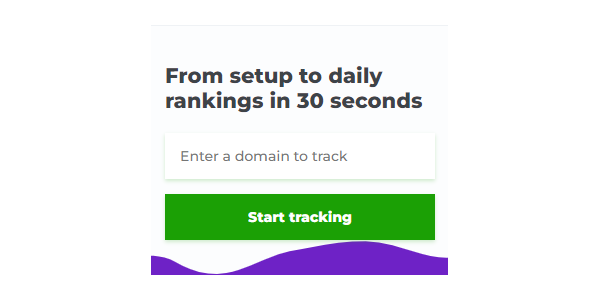
To begin a business, one must put in a great deal of effort, time, and money. However, it presents the opportunity to leave your full-time job and gain financial independence. Before venturing into the world of small businesses, it is important to conduct research on the most lucrative online business ideas and have a thorough understanding of the current state of the market.
In 2023, this article will provide aspiring entrepreneurs with the latest small business statistics that are important for building a successful small business.
1. Most Popular Social Networking Platforms
As per Statista, the most popular social networking platforms are Facebook and YouTube. Facebook boasts nearly 3 billion users on a monthly basis, while YouTube presents approximately 2.5 billion advertising prospects. Following closely are WhatsApp and Instagram, both having 2 billion active users.
To gain an advantage on social media, ensure that you employ proven marketing tactics.
2. Social Media Posting Frequency
In terms of posting frequency on social networking sites, 94% of small businesses post monthly, 79% post weekly, and 52% post daily. Only a small portion of small companies, specifically 6%, post less than once a month. It should be noted that there is no set rule for posting frequency, but a majority of social media users, 74% to be precise, prefer brands to post once or twice daily.
3. Social Media User Demographics
22% of consumers utilize social media to search for new products, whereas 71% of Gen Z users frequently employ social networking sites to explore and come across novel items. Conversely, a mere 17% of baby boomers browse social platforms with the intention of discovering new brands.
28% of Gen Z and millennials bought their desired product straight from the social media app after locating it, while Gen X and baby boomers accounted for 18% and 4% respectively.
4. Small Businesses Invest More in Social Media
Increasing spending on social media is planned by 54% of small businesses, while 30% intend to decrease their expenditure on print advertising.
Social media has a large user base, making it an effective and profitable digital marketing channel. However, not implementing SEO alongside being active on social networking platforms can lead to poor results or financial losses.
We suggest the application of eCommerce marketing strategies and the optimization of search engine campaigns.
5. Social Media Content With the Highest Engagement
Among social media users, funny content is enjoyed by almost half of them (48%), while relatable content is preferred by 42%. Additionally, 36% of users find product-led campaigns attractive. Expert interviews, news stories, polls, and informational posts are also popular types of content.
In addition, social media platforms such as Instagram and TikTok should be the focus for new businesses targeting Generation Z and millennials, as younger audiences have a preference for watching shorter videos.
6. Amount of Small Business Loans
The amount of the average loan depends on factors such as the borrower’s business type, bank, lending institution, and loan terms. In the fourth quarter of 2021, small business loans averaged $52,158. As for loans with fixed interest rates, the average amount was $73,072.
In general, small business owners tend to favor making consistent, long-term payments in order to offset any potential volatility in interest rates.
7. Average Small Business Revenue
The average yearly income for a self-employed business is $44,000, while an employer firm can earn approximately $4.9 million annually. In 2020, only 63% of small businesses were able to make a profit, whereas 23% experienced a decline in revenue, and 11% closed down.
Small businesses were fortunate that 73% of them were able to receive financial aid from the Paycheck Protection Program (PPP), which allowed them to cover operating costs and maintain a good cash flow.
8. Small Business Loan Approval Rates
The approval rate for small business loans is 57%, but numerous factors such as the type of bank and the applicant’s location, race, and gender will determine whether each loan is approved.
Small lenders have a higher approval rate (51%) for small businesses in rural areas as compared to large banks (38%) which are preferred by businesses in big cities.
9. Largest Expenses for Small Businesses
A significant portion, approximately 70%, of the expenses incurred by companies is allocated to compensating their employees through wages and bonuses. In times of financial difficulties, a considerable number of small businesses resort to either conducting large-scale layoffs or engaging freelancers. The second largest expenditure for companies, ranging from 17% to 25% of their overall budget, comes from stocking inventory.
10. Most Popular Form of Business Financing
Rollovers for Business Startups (ROBS) is the preferred financing option for the majority of business owners, as 52% of them make use of it. Cash is the choice for 19% of small businesses, while 13% turn to Small Business Administration (SBA) loans for financial assistance. With only 3% of respondents utilizing a line of credit, it is considered the least favored method of financing.
11. Small and Medium-Sized Businesses Are Major Drivers of Global Economic Growth
SMEs, which stands for small- and medium-sized businesses, make up over 90 percent of the business population, according to SalesForce (2019). Recent statistics have also demonstrated that small companies play a significant role in job creation.
Over the past few years, there has been a substantial increase in employment opportunities created by SMEs. Furthermore, SMEs play a crucial role in driving innovation, with their contributions varying considerably between firms, industries, and countries.
The advancement of SMEs to participate in the global economy has been greatly influenced by better access to global markets, improvements in knowledge networks, and digitalization. Ultimately, SMEs make substantial contributions to global economic growth through employment generation, promotion of sustainable industrialization, and fostering innovation.
12. Younger Generations Are More Likely to Create a Side Business
According to statistics, there is evidence that the younger generation of entrepreneurs has a greater inclination towards engaging in side-hustles. Specifically, Millennials and Gen Zers are significantly more inclined, by a notable 188 percent, to have the desire to establish a supplementary business in comparison to Baby Boomers or traditionalists (Salesforce, 2019).
Millennials and Gen Zers are also 48 percent more inclined to state that their reason for starting a business was having a passionate idea to introduce to the market, when compared to Baby Boomers.
Thanks to the convenience of starting your own business, the process has become more convenient for younger generations aspiring to be self-employed. The emergence of online marketplaces has made it simpler to operate a business from the comfort of one’s home.
13. Percentage of Small Businesses Fail
The fear of failure is a major concern for individuals who venture into entrepreneurship. This fear is not unfounded, as recent data from the Bureau of Labor Statistics in 2021 reveals that over 20 percent of small businesses fail in their initial year, while almost 50 percent of small startups fail within the first five years.
Rather than being discouraged, this statistic should actually motivate you to start your own business. Understanding the reasons and methods behind the failure of most small businesses in their initial year allows you to create a business plan that can effectively tackle any potential risks.
While it may not be possible to completely eliminate all risks, it will assist you in comprehending the actions you can take in various scenarios that are likely to occur, leading us to the subsequent small business statistic.
14. The Primary Reason That New Businesses Fail
The main cause behind the failure of new businesses is their insufficient funds. It is worth noting that 38 percent of small businesses fail due to either running out of cash or being unable to generate additional financial backing (CB Insights, 2021).
According to statistics, the second most probable cause of new businesses failing is the absence of a market need for their product. This accounts for 35 percent of new business failures. Therefore, it is crucial for aspiring entrepreneurs to make diligent efforts to verify the demand for their product among consumers.
Startups fail for various reasons, some of which include being outcompeted by rivals, possessing a flawed business model, and encountering regulatory or legal challenges. Pricing problems, a mismatched team, and untimely product launches are also significant contributing factors to the failure of new businesses.
15. The Biggest Challenge for Small Businesses
During the initial years of establishing a new business, small companies encounter several obstacles that can limit their potential. Among these challenges, the substandard quality of workforce stands out as a prominent issue faced by small businesses.
According to a survey conducted by CNBC in 2019, labor quality was considered the most significant issue for small businesses by 52 percent of the participants. Small business owners express difficulties in finding skilled individuals to recruit. Moreover, for businesses with over 50 employees, the percentage of owners facing challenges in finding qualified hires increases to 63 percent.
In addition to this, small business owners encounter financial difficulties as well. Due to their limited funds, smaller corporations often face challenges in effectively managing their finances.
16. Top Digital Marketing Channel Among Small Business Owners
Social media is the top choice for small business owners, with 64 percent of respondents using it in their marketing strategy according to a survey conducted by The Manifest in 2019.
According to the same study, a significant majority of small businesses engage in advertising. Digital mediums are mainly preferred compared to traditional channels. After social media marketing, online marketing is the second most favored method of advertising, accounting for 49 percent. This is followed by print marketing at 36 percent and TV at 22 percent.
Small businesses prefer using digital as a medium of advertisement since it allows them to effectively target their customers. Digital marketing enables small businesses to reach individuals who are more likely to have an interest in their products, whereas traditional methods target a wider audience.
According to social media statistics, it can be concluded that social media marketing is a valuable tool for businesses since 73 percent of marketers believe that their social media marketing efforts have been either “somewhat effective” or “very effective” for their business.
Side notes
There is no doubt that small businesses will experience significant events in the year 2023.
If you are a small business owner or someone interested in starting a business, these statistics can assist you in making better decisions in the face of increasing competition. Being aware of current trends will also aid in tackling challenges more proactively.





